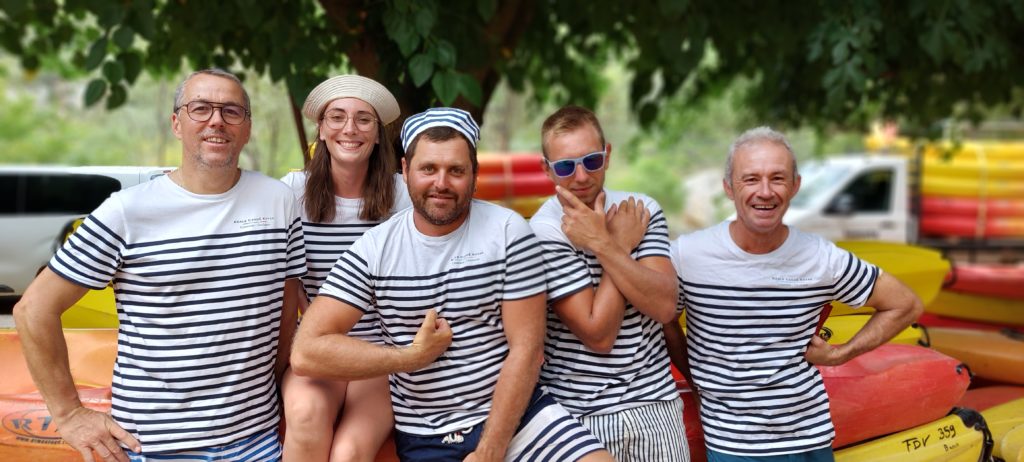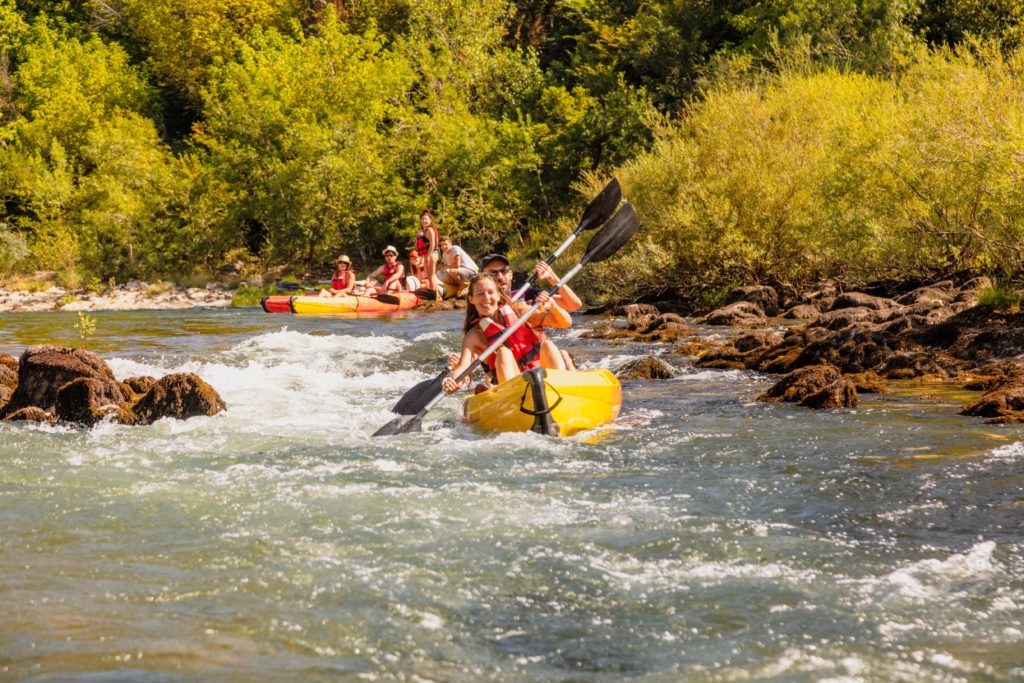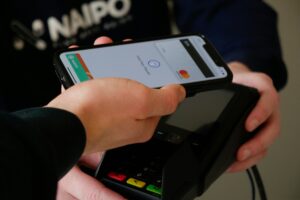In recent years, the population of France and the rest of the world has been experiencing increasingly high temperatures. Repeated heatwaves and irregularly spaced rainfall in the summer of 2022 have caused drought in France, and further called into question the way in which water is redistributed.
This drought has had a severe impact on many players, including water sports providers, and not necessarily in the way you might think. We took a closer look at the subject, turning to our customers to share their experiences and their vision of the situation.
How was the summer of 2022?
Despite the recurring drought warnings, many water sports providers were able to operate in decent conditions. However, consumer behavior was affected.
"We had, and still have, a flow that's in line with what we have every summer" - shares Olivier Bachelot, manager of the Réals Canoe Kayak base.
"Last year, in 2022, we were able to work all the time, but despite the high temperatures, where you'd think people would be looking for water and coolness, we made 10% losses on the previous year. This is partly due to the fact that the media, in their need to make the exceptional and the extraordinary, will show us images of empty lakes that will run on a loop everywhere, and this will act as religion foreveryone".
Jeanne Nicollet, manager of Canoë Rapido, also wonders about the impact of the media coverage of the drought on her business:
"Salesanalysis is very complicated. Last year, we almost all had a drop in sales. Was it linked to the drought? A drop in purchasing power or something else? On the other hand, a lot of people were asking us if there was enough water. We're afraid that some people didn't come canoeing or kayaking, thinking there wasn't enough to go around."
So how is it that, despite the drought, many service providers were able to work in perfectly good conditions?
The reality and specificities of nautical activities?
To understand this situation, we need to look at how service providers operate and how they strategically place their products.
"There arereally big disparities from one valley to the next," explains Olivier.
We work on the Orb, a 135 km-long river, which is pumped. The water manager on our territory obtains water from this river to meet the irrigation needs of the vineyards and the drinking water needs of the coastline between Vendres and Gruissan.
In summer, with the growth in water requirements linked to tourist flows, water withdrawals are a little higher. Our base is located between the dam and the extraction point, so we always have flow support that enables us to operate, at least until September. When water requirements drop, the flow is supported less regularly."
What's more, the notion of drought is equally complex. While most people imagine desolate landscapes when the term is invoked, this is not always what the reality is. In June 2023, France has already been on drought alert for some time, while the warmer months have not yet arrived. This may seem paradoxical, given that many regions have been experiencing regular, if not daily, rainfall and thunderstorms for several weeks now.
Our customer Jeanne Nicollet from Canoë Rapido explains:
"We need to make a clear distinction between surface water, such as river water, and groundwater, which is the main source of drinking water in France. In the Hérault region, for example, we are still under a drought decree to limit drinking water consumption, as the water tables are still low. But with the storms, the river Hérault is high. We even had to suspend operations because there was too much water".
However, it's important not to generalize. Some service providers have more difficulties than others.
Olivier points out that the conditions are not the same for everyone:
"One of my colleagues, located in the same valley, upstream from the Orb tributary where the dam does its turbines, at least for part of his runs, so he can't take advantage of the flow support. For him, it's a bit more complicated, but he can use a route below, so he's not completely bothered either".

More bad weather for industry professionals in 2023
"The subject of drought is something I've had to deal with at least 2-3 times a week since March 2023 in view of the severe drought context", - testifies Olivier Bachelot.
As water redistribution and management of the greater basin is carried out by the Prefect, a decision has been taken to ban canoeing, kayaking and whitewater activities in the event of a drought alert.
To counter this decision, we had to call on the legal services of the canoe-kayak industry, with the support of the French Canoe-Kayak Federation and the National Rental Federation. Thanks to this, from a legal and administrative point of view, we have fewer worriesat the moment".
According to Olivier, the attempt to ban water sports in the context of the drought may be linked to the superficial approach to the subject:
"We don't take any water or discharge any water, so all we do is circulate on the water. When circulation is not possible, we stop our activities and that's it, without waiting for bans. However, the authorities don't necessarily have detailed knowledge of all our activities.
We had to explain that, unlike most users, we don't need to take water out of the river or the water table. And then, among other things, we had to contend with lobbying from other activities".
Coping with drought - everyone's business
Despite the fact that water sports and other outdoor activities do not in themselves consume water, there is almost always indirect consumption. Awareness of this issue among canoe rental companies and water sports providers is helping to preserve water resources.
"We're not going to deny that our region is on heightened drought alert. So we're careful on a daily basis, and we've changed the way we work to be more economical. For example, before, to disinfect our equipment - vests, overalls - we used to put disinfectants in large quantities of water and leave them to soak in. Such water consumption was neither reasonable nor sensible.
So now we disinfect our equipment by spraying a dilute solution, which saves us an impressive amount of water: it's not the same thing to fill a 150-200 liter tank as a few 5 liter sprayers-explains Olivier.
We also monitor the use of our showers and toilets. We make sure to prevent uncontrolled and excessive use by limiting access to the facilities. Small gestures allow us to contribute as much as we can".
Other water-saving solutions exist.
"We really use very little water in our structure. We have dry toilets and hydroalcoholic solutions to clean our hands," shares Jeanne, Canoë Rapido.
These and many other measures can be duplicated in other leisure facilities, not just those linked to boating. Water-saving infrastructures, raising customer awareness - all these can help preserve this precious resource.

Advice from the Guidap team: How to counter the impact of drought on the marketing of water sports activities?
There are a number of approaches that can help address the drop in sales caused by drought. We have tried to summarize those that are quick and easy to apply:
- adapt communication on your website. It can help to reassure and attract customers if you display information on the status and navigability of your routes on your site. A clearly visible and implicit message (possibly with the date of the update) will also save you time spent on the phone explaining that you have enough water.
- regularly communicate on social networks. Social networks play an important role in disseminating information, so you shouldn't neglect these channels. Regular posts or stories can help you keep potential customers up to date with your browsing conditions.
- communicating with your tourist office. When it comes to communication, tourist offices are essential allies for leisure service providers. Take advantage of this, by highlighting information on the status of your routes.
- update the message on your answering machine. Simply add the information that your conditions allow browsing, and customers will be able to book online even without waiting for your callback.
- smooth customer flows. To work ahead of restrictions, but also to address potential conflicts of use and protect the river, it can be useful to regulate the number of people on the water at any given time. Instead of having 100 people at 10 a.m. and 5 people at 9 a.m., you spread your customers out throughout the day. Your customers have a better experience, and your reception is more fluid. It's a win-win situation.
If you'd like to easily streamline your welcome, you can use our tutorial to set it up on GUIDAP.




